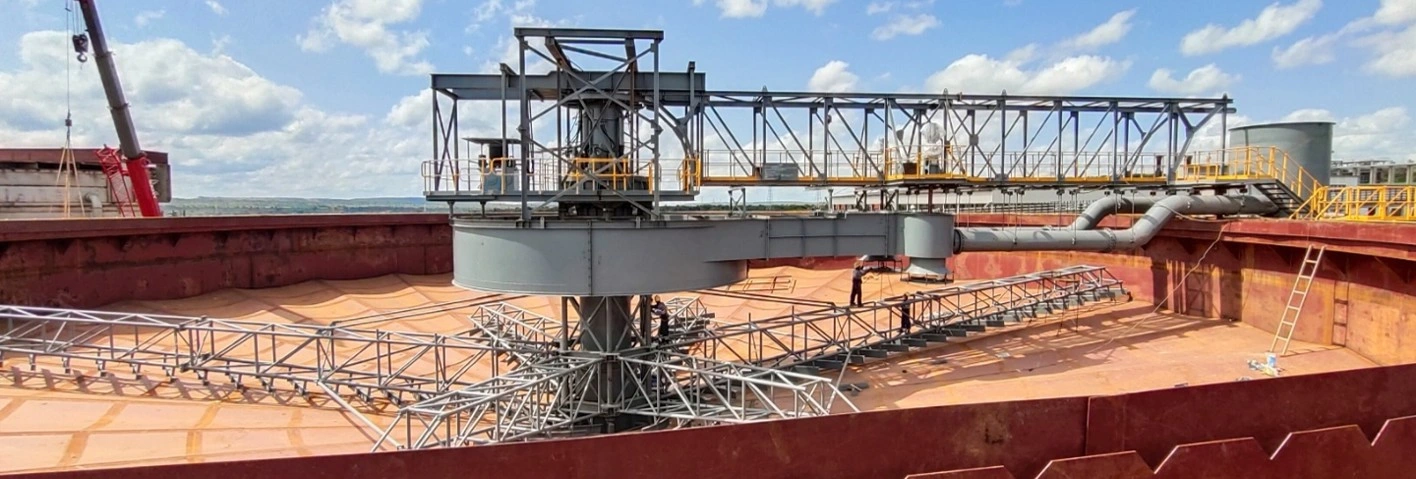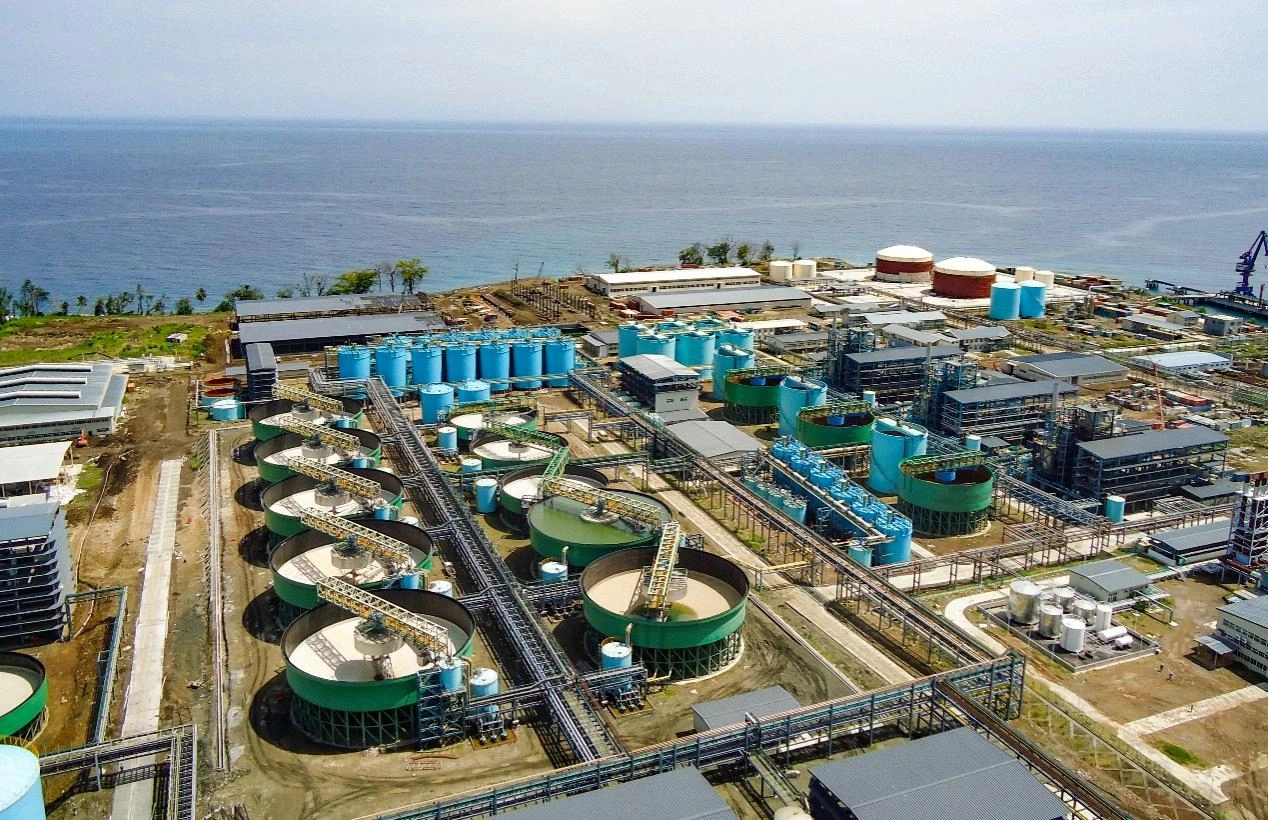Imagine a glass of murky water sitting on a windowsill. Gradually, the dirt particles drift to the bottom, leaving clearer liquid above. This natural settling occurs regularly, from river deltas piling up sediment to ponds clearing after a storm. In industrial environments, however, this process expands significantly. Gravity thickeners, including those used as thickeners in wastewater treatment, transform that basic concept into a reliable tool for separating solids from liquids in slurries. As a world-leading thickener manufacturer, NHD focuses on center drive models that manage diverse tasks, ranging from mining tailings to chemical processing wastewater treatment. These units hasten settling and reduce energy consumption, making them a preferred choice for plants seeking efficiency. If you oversee operations in wastewater treatment or mineral extraction, understanding how these devices function and outperform can reveal ways to boost output without increasing expenses.
Key Indicators for Measuring Gravity Thickener Efficiency
When picking or assessing a gravity thickener, it’s not just about the upfront specs. Operators rely on a handful of core measures to gauge how well the equipment performs day in and day out. These indicators reveal if a unit is delivering on promises like better solid recovery or lower running expenses. Let’s break them down one by one, starting with the basics of what comes out of the bottom.
- Underflow Density: Underflow density refers to the concentration of solids in the thickened sludge discharged from the thickener’s base. Higher density means more effective compression, which reduces the volume of material needing further handling. In practice, targets often hit 46-53% solids for tasks like red mud washing in alumina plants. NHD’s deep cone thickener, for instance, pushes this to levels where slurry starts at 55% solids and ends up at 70%, a mark that’s hard to beat without massive energy input from alternatives like evaporators.
- Capacity: Capacity measures the volume of slurry a gravity thickener can handle per unit time, often expressed in tons per day or cubic meters per hour. A standout unit might process 15 times more than older designs, which is crucial for high-output sites like tailings thickeners in mining. Low capacity bottlenecks the whole line, forcing expansions or parallel units. From industry reports, efficient models keep up with feed rates without overflow issues, saving on infrastructure.
- Flocculant Consumption: Flocculant consumption tracks how much polymer or other agents are needed to clump particles for faster settling. Efficient thickeners use less by design, preserving floc structures during mixing and feeding. Excessive use not only raises costs but can lead to inconsistent results if dosing varies. In chemical thickener applications, like phosphorus processing, minimizing this keeps budgets in check while maintaining clear overflow.
- Clarity of Overflow: Overflow clarity gauges the solid content in the liquid exiting the top, ideally below 0.2 g/L for reuse in processes. Poor clarity clogs filters downstream or violates the discharge rules in wastewater management. Good designs achieve this through careful feed distribution and rake action, allowing cleaner water recycling in applications like thickeners in wastewater treatment.
- Power Consumption: Power consumption covers the energy drawn by drives, rakes, and pumps. Traditional units can rack up high bills with inefficient motors, but advanced ones trim this by using mechanical transmissions that handle loads better. In large operations, dropping usage by even 20% adds up to significant savings over a year.
These indicators don’t stand alone; they interplay to show a thickener’s true value. But to appreciate modern advances, it’s worth looking at where older models fall short.
Limitations of Traditional Gravity Thickeners
Older gravity thickeners have served industries for decades, but they come with drawbacks that modern operations can’t ignore. These issues often stem from basic designs that haven’t kept pace with today’s demands for speed and reliability. Understanding them highlights why upgrades like NHD’s automatic thickener represent a wise investment.
- Low Sedimentation Efficiency: Low sedimentation efficiency plagues many conventional units, where particles settle slowly due to shallow tanks or poor flocculation. This results in longer residence times and larger footprints to achieve decent underflow. In tailings thickener scenarios, it means more water locked in sludge, complicating disposal and recovery.
- High Energy Consumption: High energy consumption arises from constant rake operation and pumping dilute slurries. Without smart controls, motors run at full tilt even when loads are light, wasting power. For chemical thickener uses, this can inflate operational costs, especially in remote sites with pricey electricity.
- Poor Reliability: Poor reliability shows up when rakes jam from built-up sediment, a common failure in traditional setups. Overloaded motors can trip, and mechanical arms may twist or deform if accumulated mud is not discharged on time. Such failures result in unplanned downtime that disrupts production flows, while manual interventions further reduce operational productivity. Since clearing a single blockage can halt production for an entire shift, these incidents underscore the critical need for enhanced monitoring systems.
These shortcomings push the industry toward in solutions. NHD addresses them head-on with features that redefine performance.
The Disruptive Advantages of NHD Deep Cone Thickener
NHD stands out as a global leader in thickening technology by addressing industry-specific challenges through precision engineering. Its deep cone gravity thickeners incorporate key components like mechanical drives and smart sensors, distinguishing them in a competitive marketplace. Let’s explore what makes them disruptive, beginning with settling performance.
- Efficient Sedimentation & Excellent Clarity: NHD’s deep cone thickener achieves exceptional sedimentation efficiency by processing 15 times more material than standard models and delivering underflow compression nearly 10 times more effectively. When combined with high-molecular-weight flocculants, it promotes robust particle aggregation. The optimized design minimizes disruption during dilution and feeding, enhancing slag removal performance. These gains are substantiated by process data: the final washed supernatant contains ≤2 g/L solids, underflow densities reach 46–53%, and alkali consumption remains ≤5 kg/t. Increasing slurry solids concentration from 55% to 70% reduces reliance on energy-intensive evaporation, resulting in annual cost savings of millions of dollars.
- Mechanical Transmission: The NHD thickener’s mechanical drive has been improved to enhance stability and load-handling capabilities, outperforming the hydraulic drive currently used by many customers. While hydraulics are popular, NHD’s version delivers superior results across metrics, from torque distribution to wear resistance. It’s built for heavy-duty cycles without the fluid leaks that plague alternatives.
- Super Large Torque: NHD’s super-large torque capability enables the production of high-capacity models such as the 55-meter unit, which delivers a torque of 6,000,000 N · m—exceeding the performance of most competitors. For any thickener operating under demanding conditions, the drive system must reliably handle high solids concentrations and sustained compression over extended periods. To meet these requirements, NHD incorporates multi-head drive systems, heavy-duty rotary bearings, and bath lubrication, all supported by precise torque monitoring that transmits real-time data to central control systems.
- Ultra-Low Maintenance & Superior Durability: Ultra-low maintenance stems from patented auto-lift rakes that raise and lower to prevent jams when slurry density increases. This mechanism autonomously resolves potential rake blockages, significantly reducing the need for manual intervention. Even in harsh operating environments, like non-ferrous smelting, this system extends service life and minimizes parts replacement.
- Intelligent Monitoring System: The intelligent monitoring system is equipped with a real-time torque display for the rakes, enabling early detection of jamming risks. It continuously tracks torque variations, allowing operators to adjust parameters for optimal sediment balance and discharge efficiency. Within predefined thresholds, it maintains consistent production; beyond these limits, it triggers alarms and automatic shutdowns to prevent equipment damage. Integrated with Distributed Control Systems (DCS), the system utilizes ultrasonic sensors sourced from the UK to provide accurate slurry level and solids concentration data.
These advantages don’t just shine in labs—they prove themselves in real-world applications.
Practical Applications: Where Does the NHD Thickener Play a Role?
NHD gravity thickeners apply across sectors, from phosphorus chemicals to power desulfurization. Let’s take a look at their outstanding performance in specific cases and how they cope with specific challenges on-site.
- Indonesia: In Indonesia’s Lygend Mining nickel and cobalt smelting, NHD supplied Φ32m, Φ36m CCD, and Φ42m thickeners. Despite seismic risks associated with the Pacific Ring of Fire and pandemic-related delays, NHD opted for duplex stainless steel construction instead of carbon steel with rubber linings. This decision ensured structural integrity, shortened construction time, and guaranteed reliability — enabling Phase 1 targets to be met and even exceeded.
- Papua New Guinea: At the MCC Ramu cobalt-nickel project in Papua New Guinea, completed in 2017, NHD delivered a Φ36m CCD thickener and an agitator. This project marked the world’s first lateritic nickel ore operation to be rapidly constructed and successfully ramped up to full designed production capacity.
- Congo: In the Democratic Republic of Congo, NHD installed a Φ45m thickener for Sicomines SA’s copper and cobalt smelting operations, and another Φ45m unit for Huagang Mining. An additional Φ20m CCD thickener was supplied to China National Jinyu’s Congo facility.
These cases span 50+ countries, with over 500 partners, reflecting the deep trust global collaborators place in NHD’s strength. NHD’s innovative solutions and extensive expertise in chemical equipment manufacturing have earned it a stellar reputation worldwide, fostering strong, reliable partnerships across diverse markets.
Conclusion
In summary, NHD’s gravity thickeners tackle sedimentation challenges with exceptional capacity, cutting-edge smart monitoring, and durable, robust construction, reflecting the company’s 33 years of expertise as a leader in chemical and mining equipment. Backed by over 200 patents and a global presence in 50+ countries, NHD transforms inefficiencies into significant energy savings and reduced downtime. As a trusted partner in alumina and non-ferrous smelting, NHD’s commitment to innovation and excellence shines through. For customized gravity thickener solutions to optimize your operations, contact NHD at [email protected]—your pathway to industry-leading performance and reliability.




